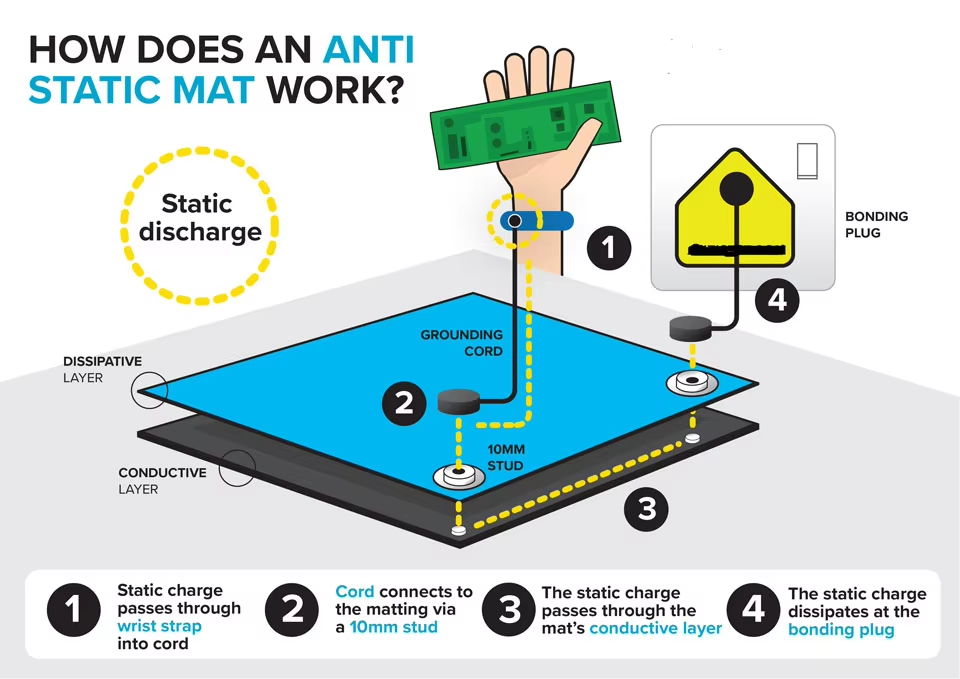What Is Electrostatic Discharge (E.S.D)?
Upload Time:
Sep 12, 2025
Electrostatic discharge can occur when two surfaces come into contact and create friction with each other. Examples include: walking over synthetic floors, rubbing of synthetic garments, shifting of plastic boxes, unrolling of PVC adhesive tape and the movement of a conveyor belt. When two surfaces come into contact with each other, this can build up an electrostatic charge. One surface becomes positively charged and the other surface becomes negatively charged causing an imbalance.
The amount of static electricity generated depends on the materials subjected to contact or separation, friction, the area of contact or break, and the relative humidity of the environment. At lower relative humidity, as the climate is drier, charge generation will increase significantly. If the electrostatic charge comes into contact with the suitable material, it transfers and causes an ESD event. ESD can also occur when a high electric field develops between two objects nearby.
In a typical environment like your home, numerous ESD events can occur, most of which you do not see or feel. It takes a discharge of about 2,000 volts for a person to feel an electric “zap”. Although, with events like lightning, it requires a much larger ESD event to arc and be seen.
While a discharge may be a nuisance in the home, ESD is a significant problem in a high tech manufacturing environment and should be avoided at all costs. The modern electronic circuitry we see on components such as printed circuit boards, can be burnt or melted from these miniature lightning bolts of ‘ESD’ and cause irreversible damage to them. ESD has cost the electronics manufacturing industry millions, if not, billions of pounds worth of damage and replacements. ESD control is, therefore, necessary to reduce and limit these ESD events.
ESD can result in:
- Higher costs
- Lower quality
- Reduced customer satisfaction
Types of ESD Damage
Electrostatic damage to electronic devices can occur from manufacture to field service. Damage results from handing the devices in uncontrolled surroundings or when poor ESD control practices are used. Generally, the damage is classified as either a catastrophic failure or a latent defect.
Catastrophic:
When an electronic device is exposed to an ESD event, it may have caused a metal melt, junction failure or oxide breakdown, permanently damaging its circuitry and resulting in a loss. Such negligence is usually detected when the device is tested before shipping. If the ESD event occurs after the test, the damage will go undetected until the device fails in operation. It is the most accessible type of ESD damage typically detected during testing and incurs a lower cost.
Summary:
- A device is exposed to ESD and no longer works
- The device circuitry is permanently damaged
- Such failures are usually caught when tested and before shipping
Latent:
A latent defect is much more challenging to identify. A device may be partially degraded yet continue to perform its intended function. However, the operating life of the device may be reduced dramatically. This could cause premature systems failure, which can prove extremely hazardous and very costly.
Relevant News







